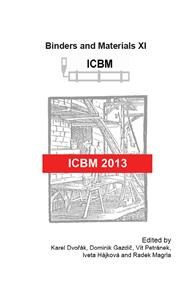[1]
Z. Zhang, D. Feldman, Synthetic fibre-reinforced concrete, Journal Progress in polymer science, volume 20, Issue 2, 1995, pp.185-210, ISSN: 00796700.
Google Scholar
[2]
R. Brown, A. Shukla, K. R. Natarajan, Fibre reinforcement of concrete structures, University of Rhode Island transportation centre, September (2002).
Google Scholar
[3]
LI Bei-Xing, The mechanical properties of polypropylene fibre reinforced concrete, Journal of Wuhan University of Technology – Mater, Sci. Ed., No. 19-3, 2004, pp.68-71, ISSN: 10002413.
DOI: 10.1007/bf02835065
Google Scholar
[4]
K. Pistol, F. Weise, B. Meng, Polypropylene fibres in high performance concretes: Mechanisms of action in the event of fire, Beton – und Stahlbetonbau, Volume 107, Issue 7, 2012, pp.476-483, ISSN: 00059900.
DOI: 10.1002/best.201200024
Google Scholar
[5]
M. Simor, J. Rahel, P. Vojtek, et al., Atmospheric-pressure diffuse coplanar surface discharge for surface treatments, APPLIED PHYSICS LETTERS 81 (15), OCT 7 2002, pp.2716-2718, ISSN: 00036951.
DOI: 10.1063/1.1513185
Google Scholar
[6]
M. Černák, L. Černáková, I. Hudec, D. Kováčik, A. Zahoranová, Diffuse Coplanar Surface Barrier Discharge and its applications for in-line processing of low-added-value materials, The European Physical Journal Applied Physics 47, 2009, pp.1-6.
DOI: 10.1051/epjap/2009131
Google Scholar
[7]
M. Černák, Method and apparatus for treatment of textile materials. US Patent Appl. No. 2004/0194223, 07 October (2004).
Google Scholar
[8]
M. Černák, An apparatus and method for improving felting properties of animal fibres by plasma treatment. CZ Patent Appl. No. 2009/000123.
Google Scholar
[9]
D. Kopkáně, L. Bodnárová, R. Hela, V. Petránek, P. Sťahel, M. Černák, Diffuse coplanar surface barrier discharge for enhance cohesion of polypropylene fibres, in 2nd wta- international phd symposium, WTA Publications, 2011. pp.336-343.
Google Scholar
[10]
D. Skácelová, M. Fialová, P. Sťahel, M. Černák, Improvement of surface properties of reinforcing polypropylene fibres by atmospheric pressure plasma treatment. Chemické listy, Praha: Česká společnost chemická, 2012, roč. 106, pp.1439-1442.
Google Scholar
[11]
M. Fialová, D. Skácelová, P. Sťahel, M. Černák, Improvement of wetting properties of polypropylene fibres by atmospheric pressure plasma treatment. In Book of Extended abstracts, PASNPG 2011. Blansko, 2011. pp.25-26.
Google Scholar
[12]
M. Fialová, D. Skácelová, P. Sťahel, M. Černák, Reinforcing polypropylene fibres modified by atmospheric pressure plasma. In NANOCON 2011, 2011, ISBN: 978-80-87294-23-9.
Google Scholar
[13]
D. Kopkáně, L. Bodnárová, Polypropylene fibres treated in cold plasma discharge and its testing by restrained shrinkage ring test, 9. Konference speciální betony, ISBN: 978-80-86604-58-9, (2012).
DOI: 10.4028/www.scientific.net/amm.464.25
Google Scholar
[14]
N. -Y. Cui, N.M. D Brown, Modification of the surface properties of a polypropylene (PP) film using an air dielectric berrier discharge plasma, Applied Surface Science, Volume 189, Issue 1-2, p.31–38, 2002, ISSN: 01694332.
DOI: 10.1016/s0169-4332(01)01035-2
Google Scholar
[15]
Q.F. Wei, R.R. Mather, X.Q. Wang, A.F. Fotheringham, Functional nanostructures generated by plasma-enhanced modification of polypropylene fibre surfaces, Journal of Materials Science, Volume 40, Issue 20, p.5387–5392, 2005, ISSN: 00222461.
DOI: 10.1007/s10853-005-4336-y
Google Scholar
[16]
T. Morávek, Plazmová úprava povrchu výztužných polypropylénových vláken v dielektrickém bariérovém výboji. Diploma thesis. Masaryk University, Brno, (2013).
Google Scholar
[17]
A.B. D. Cassie, S. Baxter; Wettability of porous surfaces, Transactions of the Faraday Society, Volume 40, pp.546-551, 1944, ISSN: 00147672.
DOI: 10.1039/tf9444000546
Google Scholar


